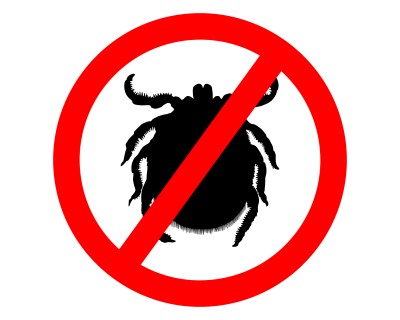What is Lyme disease?
Lyme disease is tick-borne illness transmitted to humans by deer ticks. It is caused by the bacterium Borrelia burgdorferi. The tick must be present on the skin for at least 24 hours to actually transmit Lyme disease. This seems like a long time but often these ticks are so small and go unnoticed by the individual. Deer ticks are more prevalent in the Northeast and upper Midwest and are usually found in forests and wooded areas where their hosts, deer, are abundant. Over 20,000 cases of Lyme disease are reported in the United States annually. Many people worry about their canine companions contracting Lyme disease, but it is important to know that Lyme disease is an issue for humans as well.
What are the symptoms of Lyme disease?
Lyme disease has a very broad spectrum of symptoms and is divided into three phases: early localized, early disseminated and late disease. The first sign of Lyme disease is the characteristic skin lesion and rash associated with the tick bite. It is a red circular lesion that can grow as big as 20cm and can have a central clearing (see picture). This lesion often resembles a “bull’s eye” and appears 1-3 weeks after the bite. It can itch or burn and is usually present in about 80% of cases. Patients may also complain of a flu-like illness during the early localized phase. If the disease goes untreated, the early disseminated phase comes next which can resemble a viral illness as well and include symptoms such as: fatigue, headache, joint pain, muscle aches, neck stiffness and fever. In 20% of cases, this phase can also include neurologic and cardiac involvement. Neurologic symptoms include meningitis, Bell’s palsy (paralysis of the facial nerve), and encephalitis. Cardiac manifestations can include heart blocks, pericarditis and arrhythmias. Arthritis is a common manifestation of late Lyme disease and occurs in about 60% of untreated cases. It usually occurs several months to years after the initial, untreated infection. The knee is the most common joint affected, but joint pain, swelling and arthritis can occur in any joint in the body. This can be intermittent or persistent and can turn into a chronic arthritic issue for the patient. Some patients may not have any manifestations of early disease and arthritis could be the presenting symptom of Lyme disease years after the initial bite. Late disease can also be more serious and include Lyme encephalopathy, which can give the patient cognitive difficulties.
How is Lyme disease diagnosed?
A thorough physical exam is important to assess possible Lyme disease. The skin should be checked for lesions and rashes. Any painful joints should also be assessed. Arthralgia is common in early Lyme disease. This can be a single joint or multiple and can be persistent or intermittent. A neurologic exam should also be performed to evaluate the extent of neurologic damage. Sometimes the characteristic lesion alone is enough to diagnose Lyme disease. Patients with suspected Lyme disease should have their blood tested. The blood tests can take a few weeks to be positive. If the initial blood test is negative but clinical suspicion is high for Lyme disease, the blood test should be repeated in two weeks. If a patient presents with a red, hot, swollen joint and Lyme diseases is suspected, fluid drained from that joint should be sent for Lyme testing.
How is Lyme disease treated?
Once Lyme disease is diagnosed or if there is a high suspicion for Lyme disease, antibiotics should be administered. The most common and effective antibiotic is doxycycline anywhere from 10-28 days. The duration of antibiotic therapy ranges due to the stages of the illness. Intravenous antibiotics may even be used if the patient is experiencing serious cardiac or neurologic symptoms. NSAIDS or acetaminophen can be used for symptomatic treatment of headache, fever and joint pain.
How do you prevent Lyme disease?
There are over 20,000 cases of Lyme disease reported every year. Prevention is extremely important, especially if you live in an area where deer ticks are prevalent. Wearing protective clothing and using tick repellent are good ways to keep the ticks off of your body. Checking your clothes and skin for ticks and promptly removing them following outdoor activities in wooded areas is important. Avoiding dense wooded areas is another way to prevent tick bites. It is important to check your dogs and cats regularly also to protect them from this illness, but also because they can bring the ticks into your home where they have the ability to infect you.
By Bethany Wink PA-C

